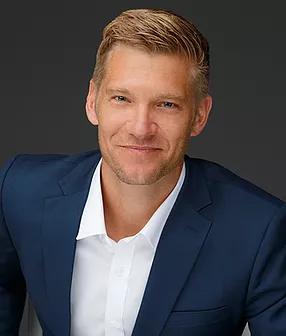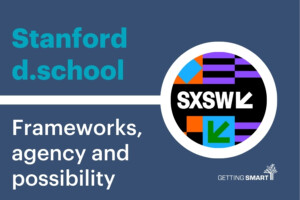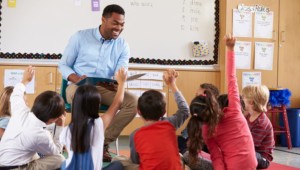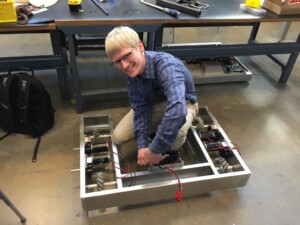Teaching Social Justice and Anti-Racism: 5 Engaging Project Ideas

The past two pandemic years have helped surface some glaring inequities between the ‘haves’ and ‘have nots.’ While the ‘haves’ experienced advanced medical care, the ability to work seamlessly from home and healthy meals delivered directly to their doorstep, the ‘have nots;’ a higher rate of COVID contraction, rising unemployment rates, and cramped one-bedroom apartments for families of six.
But it’s not all doom and gloom.
Surfacing these glaring inequities has helped move social justice and anti-racism up on the international priority list. Netflix began to feature a more pluralistic demographic in its films. Employers are embracing critical race theory and introducing more equitable hiring practices in their workplaces. And the government is offering subsidies and tax relief for lower-income communities.
But what about our schools? How are they addressing and introducing students to tenuous topics of social justice and anti-racism?
If we have learned anything, it’s that you can’t win over hearts and minds by lecturing from the front of the classroom. Only through deep learning experiences, can students empathize and contribute to social justice and anti-racism.
Here are five incredible project-based experiences teachers are using to teach these themes and five provocative questions as you consider designing your own:
Project #1: Creating More Just Laws: The ‘Broken Laws’ Podcast Project
Driving Question: How can we make our society better for everyone?
Age group: 8th grade
This eigth-grade ILEAD project began with a compelling provocation: How have laws discriminated against people on both a local and state level?
Students spent the first few weeks of the project examining their state and local laws and benchmarking them against the laws afforded by the constitution. As a result of this careful analysis, they drew up more equitable alternatives and sought out the legislators who could turn these drafts into official law. To elicit and rally public signatories and support, as a class, they edited, produced, and published a professional podcast.
Here is the website teachers used to curate the project, and here is the ‘Just Laws’ Class Podcast.
Implications/Questions for Practice:
Where is your city hall? When do they hold meetings, and are they open to the public? What local legislators/ lawmakers do you already know?
Project #2: Combatting Racism: The ‘Found Sound from the Underground’ Project
Driving Question: How might we use media to elevate marginalized voices?
Age Group: 9th/10th grade
Music is perhaps the greatest amplifier and archiver of what we as a society value. Why not use it to amplify marginalized voices in the community?
This 9th/10th grade interdisciplinary High Tech High English/Humanities project began with a gigantic class scavenger hunt. Their task: Scour their homes for records, tapes, compact discs, and mixed tapes that communicated themes of social justice, and bring them to class.
From the collection of music, in groups, students dissected lyrics spanning from 60s artists like Marvin Gaye to modern-day lyricists like Kendrick Lamar for implicit and explicit messages of social justice. In Language Class, they analyzed the lyrics for use of figurative language, colloquialisms, and idioms to communicate their message; while in Humanities, they explored broader historical movements and themes prevalent in the year they were released. In the process of completing this analysis of ‘found sounds,’ they began curating their own. In self-organized groups, they created mash-up videos, and digital listening stations to amplify marginalized voices for a public audience.
Implications/Questions for Practice:
How might you use the theme of social justice to organize the content you teach? What teachers could you collaborate with?
Project #3: Reversing Ageism: ‘Community Memoir Writing Project’
Driving Question: How can the sharing of community memoirs during CoVid help us better understand and empathize with the hardships the elderly face?
Age Group: 7th Grade
It doesn’t take an infectious disease expert to identify the way CoVid has adversely impacted our elderly.
Seventh-grade students in Australia wanted to do something about it.
In this project, each seventh-grade student paired up with an elderly member of their community to help share their life story. Through Zoom interviews, students acted as biographers, capturing insights and details into what made their elderly partner special. After completing the interviews, as a class, they carefully curated the collection of details into digital memoirs.
The hope was that by sharing these memoirs, the community would better empathize with the plight and contributions the elderly had made.
But the ‘Community Memoirs’ project did more than just engage students in a meaningful task; it also helped deliver core content. In History, students learned how historians analyze primary sources through their own photo and artifact analysis; while in language, they learned about narrative story arcs and writing techniques through constructing the memoirs.
Here’s a reflection from a seventh-grade student: “It’s beautiful. We can save the story of their lives and give them something they can keep forever.”
Implications/Questions for Practice:
What community stories might you help students uncover? How can a professional, published product help students create more empathy for marginalised voices?
Project #4: Amplifying Black Achievements: ‘The Black History Museum’ Project
Driving Question: How can a living museum to celebrate black achievements throughout history help combat racism?
Age Group: Grades 2-6
Sometimes the best way to foster social justice is to have students live out the achievements and contributions of marginalized groups.
That’s exactly what McCall Elementary did in their virtual ‘Living Museum’ project.
In this school-wide exhibition, each class hosted its own virtual museum room of prominent African Americans contributing to that category. In the virtual music room, students re-created musical pieces by famous jazz musicians; while in the literature room, students delivered inspirational poems, imitating the dialect and mannerisms of their esteemed black poets.
The entire museum was showcased via Google Hangouts, with community members and parents having the ability to visit each ‘room’ via a unique hangout link. See the museum setup here.
The result of these dynamic learning experiences?
A National Blue Ribbon award for closing the achievement gap among marginalized students!
Implications/Questions for Practice:
How might you create a ‘living museum?’ How can creating ‘living histories’ help your students honor and empathize with the obstacles minorities have overcome to make their achievements?
Project #5: Reversing Xenophobia: ‘The Community Voices Project’
Driving Question: How can sharing the stories of immigrants help reverse the stereotypes we see?
Age Group: 6th grade
In a time of heightened anxiety, with countries closing off their borders, slowing down economic activity, and introducing new restriction measures, it is tempting to look for a scapegoat. All too often, that scapegoat has taken the form of recent immigrants.
Six-grade students at The Inter-district School for the Arts thought that perhaps by sharing immigrant backstories, they could combat the xenophobia they saw prevalent in their community.
They succeeded.
In ‘The Community Faces’ Project each student was paired with a recent immigrant; tasked with uncovering their harrowing story to get to The United States; the challenges they faced upon arrival, and the contributions they made to their new community and culture. Students shared their findings in a co-created website and ‘Community Faces’ book, with proceeds from the book sales helping to fund local non-profits and even sponsor a green card.
But the project wasn’t just about reversing their own pre-conceived stereotypes; it was about transforming the community as well. Students invited members of the community to a public exhibition of their work; leading a dialogue around xenophobia and using their work to help transform thinking.
Implications/Questions for Practice:
What refugee or immigrant non-profits exist in your community? How might you partner with them to combat xenophobia? What can your students create that can be exhibited publicly?
In Closing:
With the global pandemic showing no signs of slowing down, more inequities are certain to pop up. As educators, we can choose to ignore these glaring inequities, or we can use them as opportunities for deeper learning experiences to help students address and combat them. I hope these case studies have provided you with the courage to take the first steps.
For more, see:
- A Key Component of Student Voice
- Dr. Fernande Raine On Using History and Museums to Incubate Changemakers
Stay in-the-know with innovations in learning by signing up for the weekly Smart Update.






0 Comments
Leave a Comment
Your email address will not be published. All fields are required.